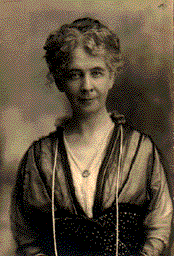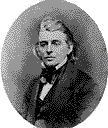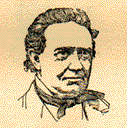

 |
 |
 Theodora Youmans |

How Wisconsin Women Won the Ballotby Theodora W. Youmans
|
 Territorial Capitol |
|
 Moses M. Strong 1856 |
Discussion of woman suffrage had begun in Wisconsin even before Wisconsin had achieved statehood. There has long been a tradition in the state that the first constitutional convention, called in the territory in 1846, seriously considered the enfranchisement of women. An examination of the debate on suffrage in this convention, however, precludes that view. The enfranchisement of negroes and Indians and the naturalization of immigrants who were already swarming into the territory made one of the important problems of the convention and aroused vigorous debate. A Milwaukee member, James Magone, who had the reputation of being a wag, offered an amendment to the pending suffrage measure that the word "male" be stricken out and the right of suffrage be accorded females as well as males. Moses M. Strong urged that women should not be "tacked onto negroes." Mr. Magone insisted. The amendment was lost. The record suggests that the woman suffrage amendment was designed primarily to embarrass those members who favored liberal franchise provision for negro and foreign men.1 |
 Edward G. Ryan |
There was, however, one phase of "women's rights" which was seriously considered and was adopted by the convention--the ownership of property by married women. This provision was bitterly opposed by some members, one of them, Edward G. Ryan, who later became chief justice of the supreme court of Wisconsin, declaring "it violated both the customs of society and the express commands of the Bible." This married women's property clause was one of the reasons why the first constitution drafted was rejected by the voters. The constitution drafted a year later was of a more conservative character; it became the constitution of the state of Wisconsin and has so remained up to this time. This constitution contained no provision for securing property to married women, but a law making such provision was passed by the legislature only two years after Wisconsin became a state.2 |
1Wisconsin Magazine of History. III, 227-30; Wisconsin Historical Collections. XXVII.
2Wis. Hist. Colls., XXVI, 43-45.